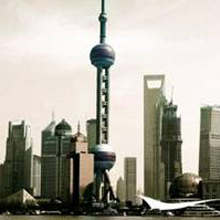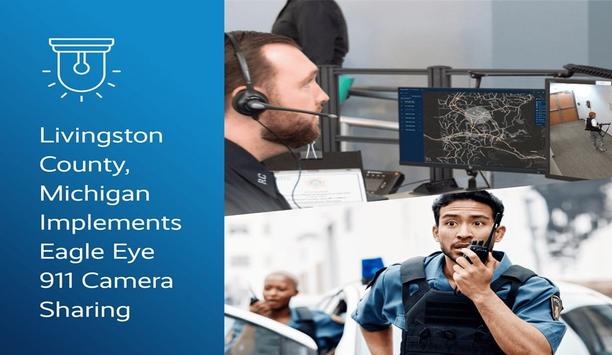 |
| The IP cameras from Hikvision adopted for the expo feature a 1/1.8 inch SONY progressive scan CCD |
Hikvision's equipment was charged with securing this world showcase by the Huangpu River in which exhibiting countries promoted national identity in their pavilions. The theme of the US pavilion was "Rising to the Challenge", with American innovation and community-building being represented in a multi-dimensional presentation. The UK pavilion, named the ‘Seed Cathedral', was constructed from 60,000 seven-metre-long aluminium rods. An exhibit that attracted particular interest was the Saudi Arabian pavilion which featured a hanging boat shaped like a half moon, complete with live date palms on the top deck.
Expo 2010 Shanghai China was a $4bn festival set to receive 100 million visitors by October. Visitors came from 190 countries to an exhibition site of 3.2 square miles, this being twice the size of the country of Monaco (equivalent to 1,000 soccer pitches) and featuring buildings shaped like rabbits alongside violin-playing robots. The exhibition even featured Copenhagen's ‘Little Mermaid' who travelled from Denmark for the event.
The Expo prompted a city-wide infrastructure makeover of $45bn, and in keeping with the scale of the enterprise, the exhibition site benefited from the world's largest scale high-definition city surveillance project with 12,000 monitoring points covering the infrastructure of the Pudong district of Shanghai. Thousands of HD fixed and PTZ cameras from Hikvision have been used on the project.
HD video in real-time
The project is the world's largest provision of high-definition video, with footage being provided to police at a central monitoring facility. A specification of the client was that cameras should give users the ability to track and zoom in on individuals or vehicles so that facial details and license plates could be observed, requirements that made major demands on product performance and system design.
Hikvision, with its track record in video technology development, supplied HD cameras that met the project requirements, delivering HD video with resolution of up to 1600x1200 pixels in real time |
The IP cameras from Hikvision adopted for the Expo feature a 1/1.8 inch SONY progressive scan CCD. Hikvision's H.264 video compression codec has been used and redundancy is provided by SD/SDHC local card storage.
Pushing the boundaries
In the past, it had not been possible to view specific details of people or vehicles clearly from footage provided by the legacy analogue cameras being used in the Pudong area. People or objects involved in emergencies or significant incidents have proved difficult to identify, so handicapping police officers who need to conduct criminal investigations and logistical analysis.
Hikvision, with its track record in video technology development, supplied HD cameras that met the project requirements, delivering HD video with resolution of up to 1600x1200 pixels in real time. With the addition of Hikvision's image signal processing technology, the video quality has exceeded all expectations.
System design
To achieve wide area monitoring, the original system often employed many analogue cameras across a single zone. For instance, at a crossroads there may have been a requirement for three or four cameras to monitor traffic flow across multiple lanes. By contrast, a single HD camera has covered a whole intersection with better image detail. Economies in installation and simplification of management processes have been significant.
The project offered authorities a flexible monitoring solution by combining PTZ cameras with fixed units. In critical environments with complex optical demands such as entrances, public squares and crossroads where there is significant scope for accidents, the PTZ cameras have been preferred and have allowed management to track and zoom in on targets to acquire facial and license plate data. By contrast, the fixed cameras provided video of simple traffic flow and the everyday movement of pedestrians for retrospective playback and retrieval.
HD video transmission
Confronted on the ground with the client's demands for image clarity, Hikvision used an HD-SDI interface in preference to the regular CVBS approach, combined with optic fibre for minimal delay. Police at the central monitoring station have thus received HD video in real-time, and can exercise PTZ control from the back end with nominal time lag, the delay being less than 250 milliseconds.
Other user benefits included remote camera configuration and upgrades to image signal processing algorithms from within the central monitoring station such that there was no need for onsite adjustment. This was of value to the client since there was little disruption to the core operation of the trade fair which had immense commercial and political importance.
Time synchronisation in all the network devices has been another highlight of the Expo project, allowing police to retrieve appropriate video clips. The control centre featured a time server to which devices can be connected directly for synchronisation, while front-end products can be integrated via Network Time Protocol (NTP).
System Integration
With the aim of simplifying management tasks, a centralised surveillance framework was implemented at the Shanghai project to manage all the sub systems. Using open architecture, this integrated all the analogue, fixed HD and PTZ HD surveillance products into one software platform which linked the control centre and local police stations throughout the Pudong area of Shanghai.
The CCTV project proved demonstrably successful in meeting the client's high surveillance requirements, optimising security for core infrastructure components such as main roads, bus stations, rail transit and public spaces throughout the exhibition area.
Centralised and distributed storage
Another challenge was data storage. Since multiple HD cameras create enormous quantities of video data, using powerful storage technology has been paramount. IP and FC storage area networks (SAN) have been used to achieve centralised network data archiving.
The application also used an NVR server in police stations for temporary caching in the event of connectivity faults between police bases and the control centre. Once the communication link is restored, video footage retained in the NVR can be uploaded retrospectively to the IP SAN automatically.
Mr Yangzhong Hu, President of Hikvision, said: "The theme of Expo 2010 Shanghai China is ‘Better city, better life.' It is therefore fitting that the organisers have opted for a security product manufacturer that strives constantly for improvement."
He continued: "The experience we drew on during this project, combined with R & D capability and an innovative approach, allowed us to respond to a demanding brief. The installation demonstrated the lengths Hikvision will go to in order to consolidate its leading position in the surveillance market, providing sophisticated products that address customers' real needs at massive infrastructure sites of this kind."


















